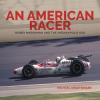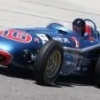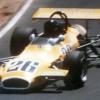E.B., on 10 May 2014 - 16:00, said:
Page 23 doesn't appear to contain any factual errors whatsoever.
Having now finished reading Black Noon, it is only fair to elaborate on the comment above (written whilst at the end of chapter 3) as well as giving my take on the book as a whole.
Let’s get the negative out of the way first. I don’t know exactly how many factual errors are contained within the first 40 pages of this book, but I stopped counting after the 15th (not to mention a few other eyebrow raisers).
Of course, it is nigh on impossible to produce a 300+ page work such as this without the odd error or two creeping in, and looking on the bright side you could argue that if you spot the mistakes then they don’t do any harm! Several of the errors are very definitely in the howler category, lit up like neon lights. The trouble is, with so many appearing so early on in proceedings, there is a very real danger of losing confidence in anything the rest of the book has to say.
That would be a shame, because once the story gets beyond these early scene setting chapters and into the core story, it soon becomes apparent that this is in fact a very well researched book indeed. This shines through as the author gets into his comfort zone and into the meat of the story that he set out to tell – the month of May at Indianapolis 50 years ago, the story of dinosaur v funny car, methanol v gasoline, Ford v Offy, USA v furriner, and most importantly the story of two talented young men destined never to see the old guard’s last great hurrah.
The book’s structure is pretty much perfect – Part 1 sets the scene, opening proceedings at the previous year’s race and introducing all the key players. Part 2 is devoted to a day by day walkthrough of the month of May, occasionally veering off to discuss a particular subplot of interest at the point most appropriate. Part 3 is the full story of Saturday 30th May 1964, and the final part covers the aftermath of the event.
It’s as well written as it is researched. It covers the engineering issues and rivalries in depth, without ever getting bogged down in complex technical minutiae. It creates a wonderful sense of “being there”, without being derailed into descriptions of the leaves on the trees or the smell of the candy. You feel a palpable build-up of tension and excitement as Pole Day approaches, and again for Bump Day, and of course for raceday itself, despite being fully aware in advance of everything that’s going to happen. The worst horrors of what happened on lap 2 are not shied away from, but are not overly dwelt upon either. The aftermath brings a simple tear to the eye, but the writing never descends into mawkishness. The overall pacing is spot on too.
The conclusions about the accident? Well, I have no idea whether they are correct or not. But they seem to make perfect sense to me. And to those who choose to disagree with them, I genuinely don’t think that their enjoyment of the story will be spoiled. There is no detailed forensic analysis to be found here, just a well-reasoned opinion based on a substantial amount of excellent research. Which is exactly how it should be. This is no 300 page crash report. Yet again the perfect balance has been found.
So, overall, the book has to be a must buy. It may well start like Eldon Palmer, but once you get beyond that, the rest of the book is a triumph in pretty much every way.
The author gets an A+ from me. His proofreaders? Stay behind after class, please.





































